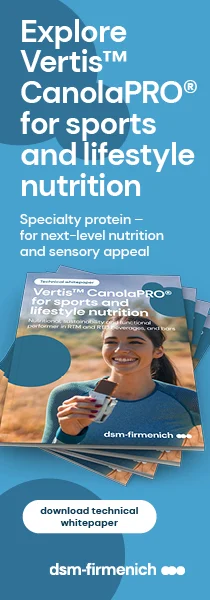New labeling requirements: FDA grants six-month extension to nutrition and supplement manufacturers
The FDA is set to assist manufacturers in adopting new labeling requirements and will not be enforcing action during the extended period.
28 Oct 2019 --- During the first six months following the general January 1, 2020-compliance date for new nutrition labeling regulations of conventional foods and dietary supplements, the US Food and Drug Administration (FDA) will be cooperating with manufacturers to meet the new labeling requirements. The FDA is postponing enforcement actions as a response to the multiple requests from manufacturers and industry groups to receive additional time to comply with the new requirements. These changes include different titles of nutrients, updated calculations and amended measuring units for selected dietary ingredients.
“For dietary supplements, the revisions mostly affect products that provide significant levels of dietary ingredients with Reference Daily Intake (RDI) values or Daily Reference Values (DRV), such as vitamins, or macronutrients such as fat, sugar and cholesterol,” says American Herbal Products Association (AHPA) President Michael McGuffin, commenting on the regulations’ changes.
“Since herbal supplements often do not provide significant amounts of these, many products may not see many changes in nutrition labeling compared to the old regulations. However, herbal supplement manufacturers should be aware of coming changes and ensure that their products’ Supplement Facts boxes are compliant,” he adds.

The revisions are intended to reflect the changes in science and dietary habits that have occurred since the nutrition labeling regulations were first established in 1999. The compliance dates for the requirements without the extension period are January 1, 2020 for manufacturers with US$10 million or more in annual sales and January 1, 2021 for manufacturers with less than US$10 million in annual food sales.
AHPA has published a free guidance document to help companies navigate the new labeling requirements.
Some of these changes include:
- Vitamin D, potassium and added sugars are now “mandatory nutrients” required to be declared when present in significant amounts.
- Vitamin A and vitamin C are no longer “mandatory nutrients.”
- Differentiation between “added sugars” (for example from acidulants and flavors) and naturally-occurring sugars.
- Differentiation between folic acid and naturally-occurring folate.
- Reference values used to calculate the percent Daily Value (DV) for declaration on the Supplement Facts box were updated for most dietary ingredients with established DVs.
- Change in units of measure for a few dietary ingredients, such as vitamin A, folate, vitamin D and vitamin E.
In late September, 13 trade associations wrote a letter to appeal to the FDA to provide the necessary flexibility in its enforcement of the new nutrition labeling rules. The letter indicated that extra time to implement the new changes is needed due to the magnitude of the task of revising all labels, the difficulty of predicting label inventory levels and the high cost and environmental impact of disposing of existing label inventory. Moreover, the continued use of existing labels for a short period following the compliance date would not present a risk of misleading consumers, states the letter.
Besides asking for a time period extension, the letter also requested the FDA to provide enforcement discretion to companies that have not labeled its products by the compliance date but can demonstrate good-faith efforts to bring their full portfolio of labels into compliance by January 1, 2020.
 Nutri-Score was the easiest FoPL to understand out of five varieties. (Credit: Nutrients)Labeling in the spotlight
Nutri-Score was the easiest FoPL to understand out of five varieties. (Credit: Nutrients)Labeling in the spotlight
Science-backed facts found on food labels are of paramount importance to ensure consumers can make informed, healthy purchasing decisions. The FDA, for example, has previously implemented labeling differentiation between “nutrition” and “supplement” facts to ensure responsible supplement manufacturers and suppliers will promote product transparency.
Moreover, a study found that the FDA’s impending mandatory added sugar labeling policy for packaged foods and beverages – set to take effect between 2020 and 2021 – could prevent or postpone nearly 1 million cases of cardiometabolic disease, including heart disease, stroke and Type 2 diabetes, over a 20 year period.
Outside of the US, the traffic light resembling Nutri-Score labeling system has been called the most effective style of front-of-pack labeling (FoPL) to help consumers rank products according to their nutritional quality. Spanish supermarket chain Eroski became the first European store to introduce the Nutri-Score system, doing so on a handful of its own-brand products in January. France and Belgium also use the labeling system voluntarily in an attempt to uniform the nutritional labeling system in Europe.
By Anni Schleicher















